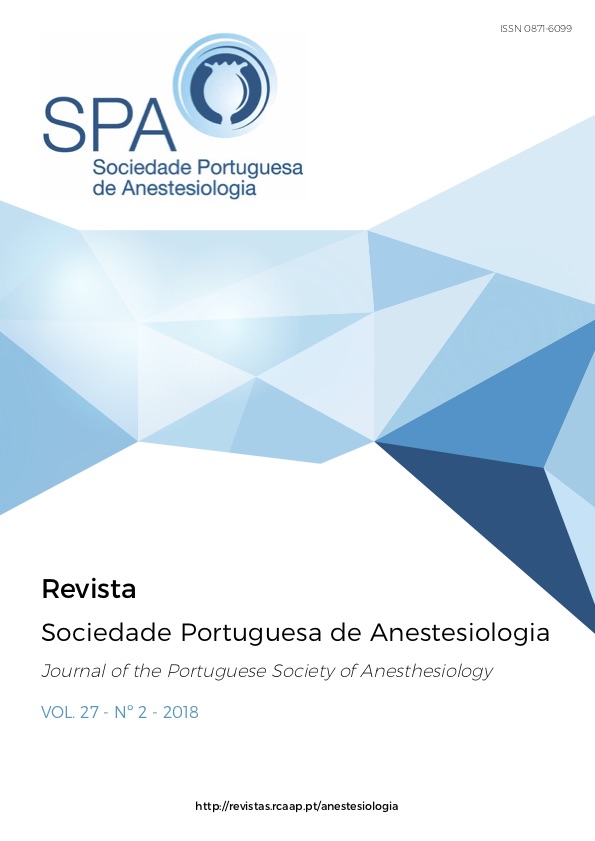Massive Hemorrhage in the Transsphenoidal Approach of the Pituitary Gland
DOI:
https://doi.org/10.25751/rspa.13908Keywords:
Anesthesia, Cerebral Hemorrhage, Pituitary NeoplasmsAbstract
Introduction: Pituitary tumors are the most common intracranial tumors. Given the complex anatomy of the region, transsphenoidal surgery has a substantial risk of complications.
Case Report: Woman proposed for excision of pituitary adenoma by transsphenoidal route. During the surgery, sudden hypotension occurred due to arterial hemorrhage, with 1500 mL of blood collected in the aspirator. The massive bleeding protocol was immediately activated and the hemorrhage was rapidly controlled. At 48 hours postoperatively, computed tomography showed extensive ischemic infarction of the territory of the left posterior cerebral artery with brainstem and mesencephalon involvement.
Conclusion: The transsphenoidal plan of the pituitary tumor, although less invasive and promising, may also be associated with severe complications.
Downloads
Downloads
Published
How to Cite
Issue
Section
License
Articles are freely available to be read, downloaded and shared from the time of publication.
The RSPA reserves the right to commercialize the article as an integral part of the journal (in the preparation of reprints, for example). The author should accompany the submission letter with a declaration of copyright transfer for commercial purposes.
Articles are published under the terms of the Creative Commons Attribution Non-Commercial License (CC BY-NC).
After publication in RSPA, authors are allowed to make their articles available in repositories of their home institutions, as long as they always mention where they were published.


